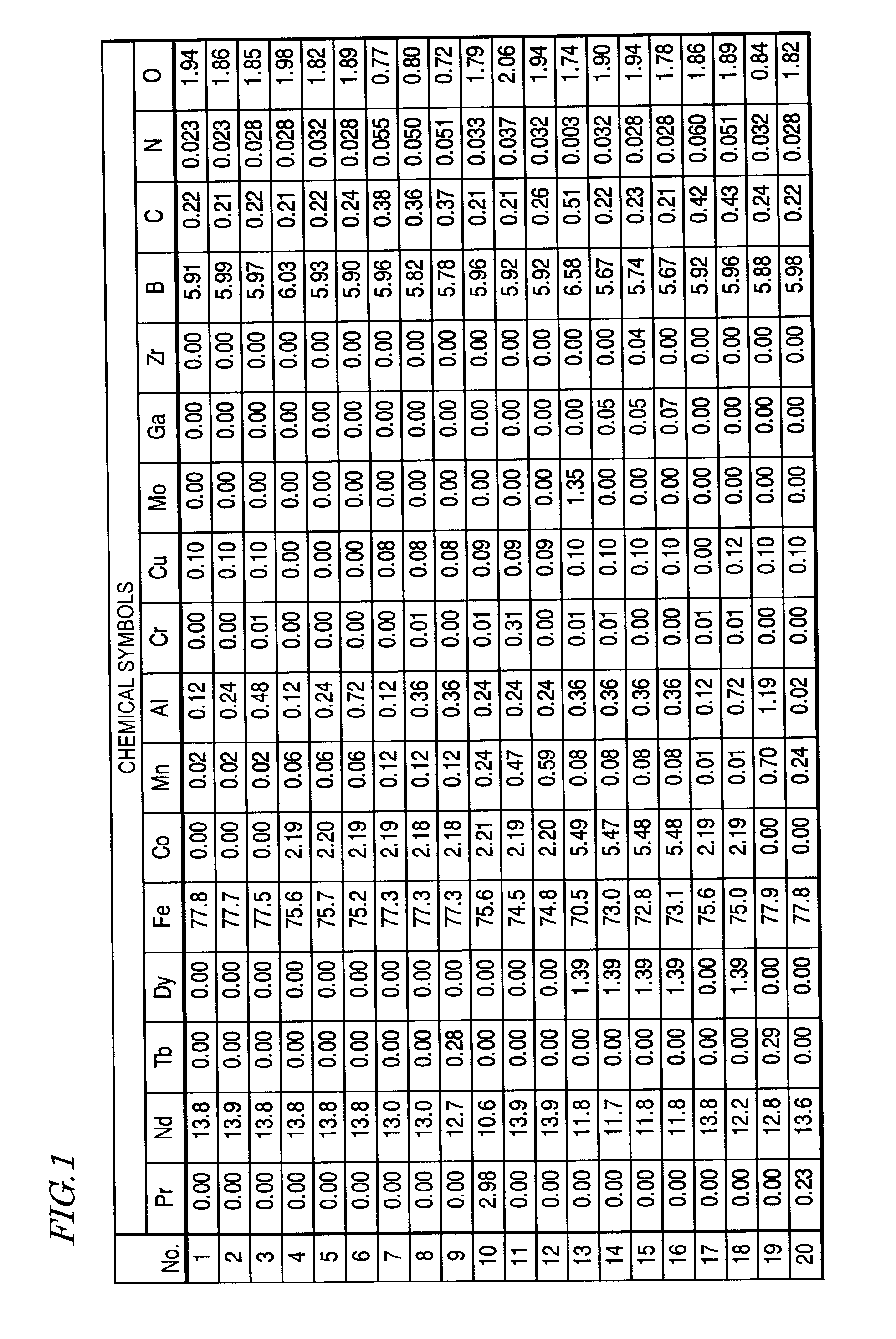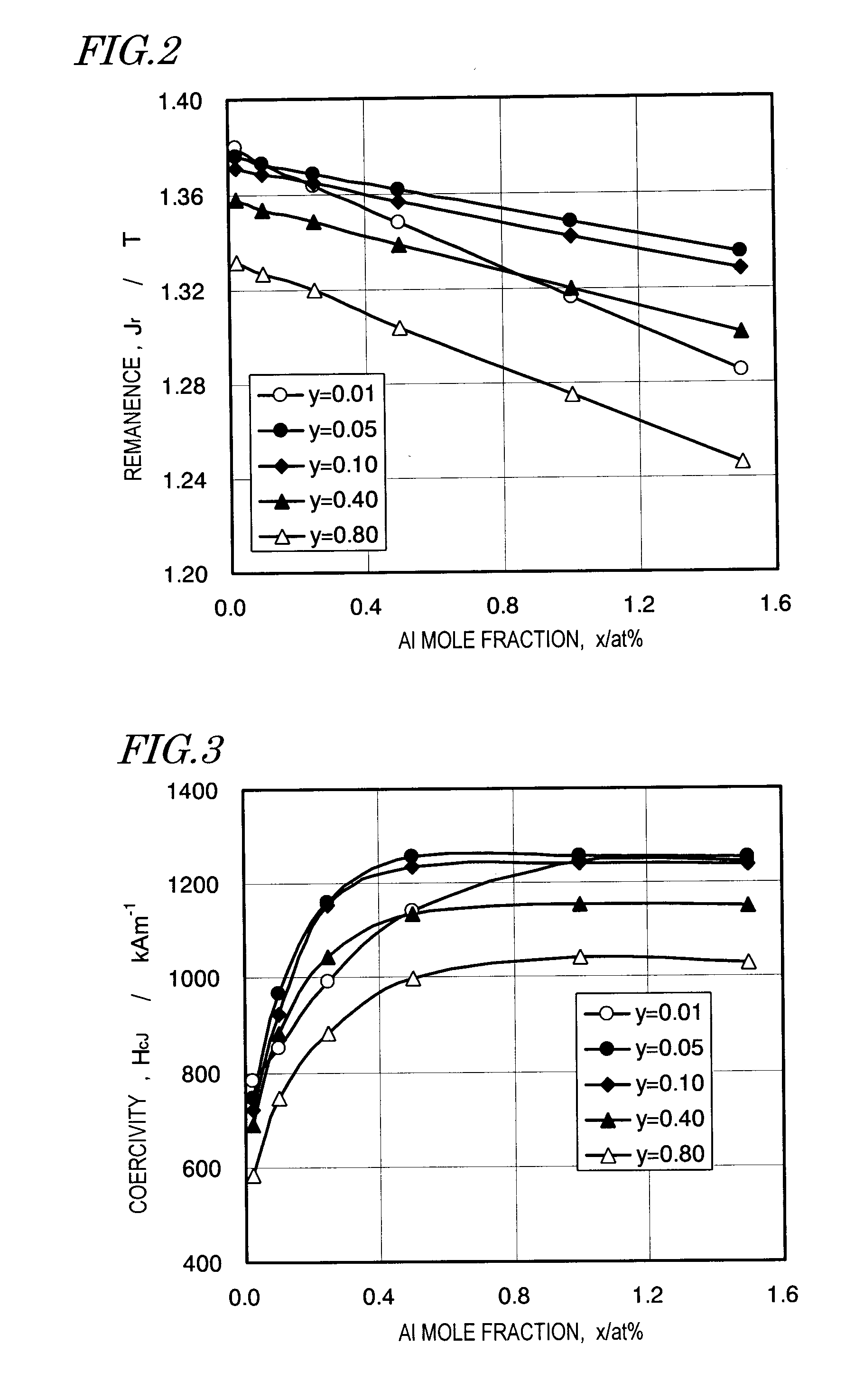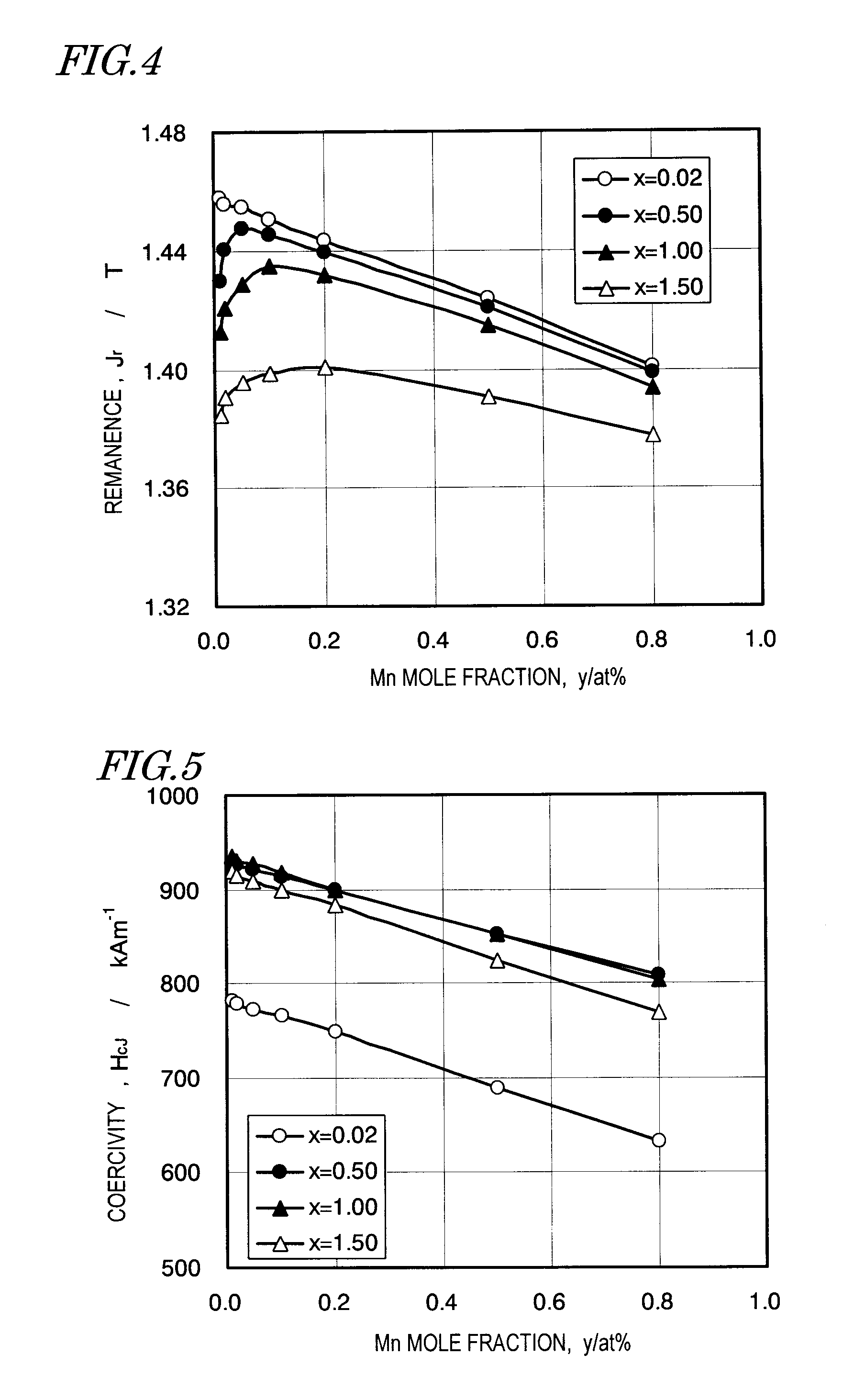R-t-b based sintered magnet
a sintered magnet and r-t-b technology, applied in the field of r-t-b based sintered magnets, can solve the problems of increasing the requirements of magnetic materials, reducing the significant variation, and reducing the effect of ferromagnetism, so as to reduce the increase coercivity, and reduce the effect of deterioration of magnetic properties
- Summary
- Abstract
- Description
- Claims
- Application Information
AI Technical Summary
Benefits of technology
Problems solved by technology
Method used
Image
Examples
example 1
[0080]An alloy with an objective composition was prepared by mixing together Pr and Nd with a purity of 99.5% or more, Tb and Dy with a purity of 99.9% or more, electrolytic iron, and low-carbon ferroboron alloy together with the other objective elements added in the form of pure metals or alloys with Fe. The alloy was then melted and cast by a strip casting process, thereby obtaining a plate-like alloy with a thickness of 0.3 mm to 0.4 mm.
[0081]This material alloy was subjected to a hydrogen decrepitation process within a hydrogen atmosphere with an increased pressure, heated to 600° C. in a vacuum, cooled and then classified with a sieve, thereby obtaining a coarse alloy powder with a mean particle size of 425 μm or less. Then, zinc stearate was added to, and mixed with, this coarse powder so as to account for 0.05 mass % of the powder.
[0082]Next, the coarse alloy powder was subjected to a dry pulverization process using a jet mill machine in a nitrogen gas flow, thereby obtaining...
example 2
[0089]Magnets, of which the compositions were represented by Nd13.0Dy0.7Feba1.Co2.2Cu0.1B5.9AlxMny (where subscripts are atomic percentages), had their remanence Jr and coercivity HcJ measured at room temperature with y set to be 0.01, 0.05, 0.10, 0.40 and 0.80 and with the mole fraction x of Al varied. The results are shown in FIGS. 2 and 3, respectively. The curves associated with y=0.01 provide data about a comparative example. In this specific example, the content of oxygen was 1.8 at %, the contents of carbon and nitrogen were 0.4 at % or less and 0.1 at % or less, respectively, and the contents of other inevitable impurities such as Si, Ca, La and Ce were 0.1 at % or less. The magnets of this Example 2 were produced by the same method as that adopted for Example 1.
[0090]As shown in FIG. 2, when y=0.05, the decrease in remanence Jr with the increase in the amount of Al added was less significant than the situation where y=0.01. This result was obtained probably due to a reducti...
example 3
[0092]Magnets, of which the compositions were represented by Nd12.8Feba1.Co2.2Cu0.1Ga0.05B5.7AlxMny (where subscripts are atomic percentages), had their remanence Jr and coercivity HcJ measured at room temperature with x set to be 0.02, 0.50, 1.00 and 1.50 and with the mole fraction y of Mn varied. The results are shown in FIGS. 4 and 5, respectively. The curves associated with x=0.02 and 1.50 provide data about comparative examples. In this specific example, the content of oxygen was 1.8 at %, the contents of carbon and nitrogen were 0.4 at % or less and 0.1 at % or less, respectively, and the contents of other inevitable impurities such as Si, Ca, La and Ce were 0.1 at % or less. The magnets of this Example 3 were produced by the same method as that adopted for Example 1.
[0093]According to the results shown in FIG. 4, if Al was added so as to account for a mole fraction x of 0.5 at % without adding Mn, the remanence Jr decreased significantly. However, when y=0.05, the difference ...
PUM
| Property | Measurement | Unit |
|---|---|---|
| Curie temperature | aaaaa | aaaaa |
| temperatures | aaaaa | aaaaa |
| D50 particle size | aaaaa | aaaaa |
Abstract
Description
Claims
Application Information
 Login to View More
Login to View More - R&D
- Intellectual Property
- Life Sciences
- Materials
- Tech Scout
- Unparalleled Data Quality
- Higher Quality Content
- 60% Fewer Hallucinations
Browse by: Latest US Patents, China's latest patents, Technical Efficacy Thesaurus, Application Domain, Technology Topic, Popular Technical Reports.
© 2025 PatSnap. All rights reserved.Legal|Privacy policy|Modern Slavery Act Transparency Statement|Sitemap|About US| Contact US: help@patsnap.com



